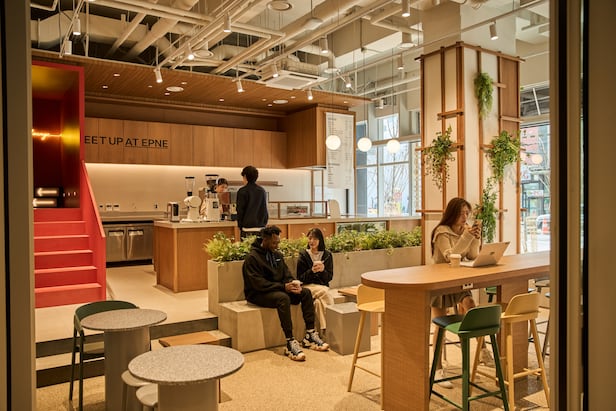
After landing a job in Seoul last year, a woman in her 30s surnamed Lee, who had previously lived in Daejeon, relocated to the city’s Dongdaemun District. However, the position was a six-month internship with no guarantee of full-time employment, making it difficult to commit to a one-year lease or secure a jeonse — a rental arrangement in which tenants provide landlords with a large lump-sum deposit in exchange for one to two years of rent-free occupancy. Instead, Lee turned to co-living — a shared housing model where residents have private bedrooms and bathrooms while sharing communal spaces such as kitchens and living areas. After spending six months in a co-living unit, she was offered a permanent position and opted to remain in the space until she finds a more stable housing arrangement in Seoul. “Rent is roughly 30 percent higher than comparable units in the area, but the flexibility to choose the length of my stay based on my circumstances is incredibly convenient,” Lee said. “The amenities — like the gym, kitchen, and laundry room — are thoughtfully designed to suit younger residents’ preferences.”
Originally popular among professionals in their 20s and 30s, co-living has gained traction in South Korea’s rental market by attracting a broader demographic, including university students, freelancers, and international students. While similar in concept to share houses — privately owned homes converted into communal spaces — co-living distinguishes itself through corporate management and digitized systems for contracts, check-ins, and check-outs. Co-living operators are targeting renters who prefer monthly payment structures over large deposits but are reluctant to sign standard two-year contracts due to circumstances such as school breaks, job changes, or business travel. With new properties opening each year, the number of co-living units nationwide exceeded 7,300 as of February.
A key advantage of co-living is its flexibility. Students living in studio apartments under conventional leases are typically bound to yearlong contracts, paying rent even when away during vacation periods. Co-living offers short-term options ranging from one to three months and requires lower deposits than traditional rentals. Corporate management also provides a level of protection amid the growing number of jeonse fraud cases in South Korea. “Inquiries surged after jeonse scams became a serious concern in 2022,” said a spokesperson for MGRV, which operates the co-living brand Mangrove. “Last year, the average competition rate for move-ins hit 7.4 to 1, and we now receive 120 to 150 waitlist requests each month.”
To differentiate themselves and attract younger tenants, co-living companies have expanded amenities and services. Many locations now offer on-site cafés, communal kitchens, small theaters, libraries, fitness centers, and climbing walls. Some also organize experiential programs for residents. Office workers use shared workspaces, while students utilize meeting rooms for group projects. “Because I can rent furniture and appliances like TVs, desks, and chairs, the burden of moving in or relocating is much lighter,” one resident noted.
Co-living is also emerging as a viable option for international students in South Korea. At MGRV, foreign nationals now account for roughly 25 percent of residents across all properties. For many of these students — particularly those from Europe and North America — long-term lease requirements and deposits exceeding 10 million won present significant challenges. “More than half of our foreign tenants come from countries where co-living is already well-established, such as the United States and the United Kingdom,” said an industry official. “Recently, we’ve also seen an uptick in business-to-business inquiries from overseas educational institutions.”


